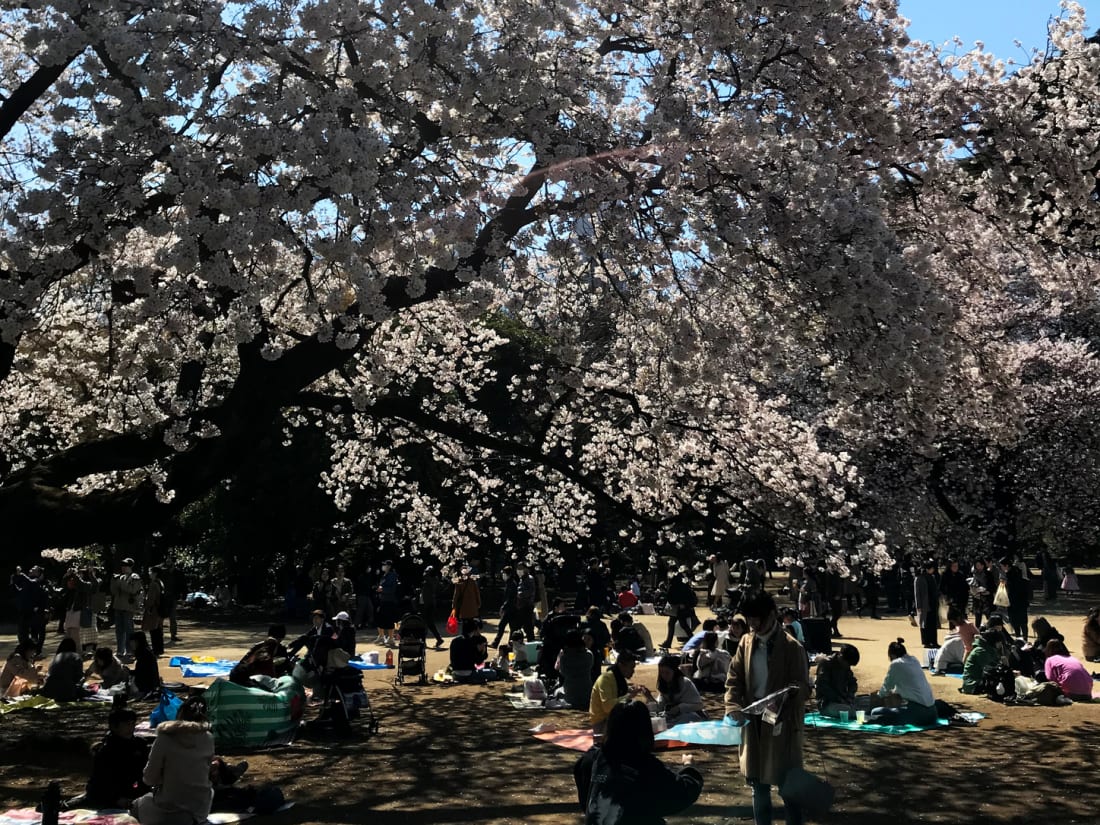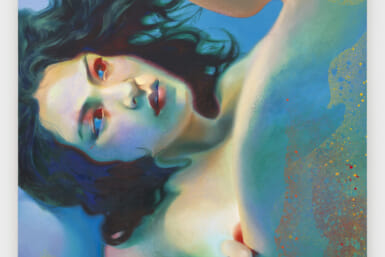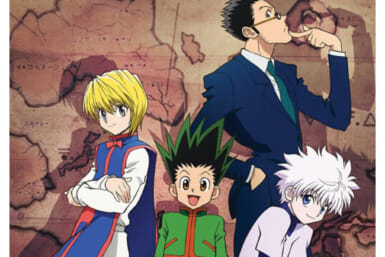During cherry blossom season in Japan the entire nation stops to appreciate the impermanence of beauty. Also, in a country whose history has seen a fair amount of bloodshed, the end of the season, as the pink blossoms flutter to the ground, serves as an acknowledgement of death’s inevitability.
This year I headed to Shinjuku Park whenever the weather allowed for a hanami party of one and partook in my favorite aspect of sakura season – people watching. These are the people I saw.
The Cat People
There were three people wearing black. Two women; one dude. I assumed they were university students tip-toeing their way through that defiantly awkward post-adolescent phase (that some of us never outgrow). The dude was wearing a black cape and shiny maroon shirt. They all wore cat ears. Like everyone else at Shinjuku Park, they were seated on a plastic sheet with typical bento snacks spread before them. They were engaged in polite conversation. It was disappointing that no one purred or meowed or licked the backs of their paws. When they stood up to leave I got a better look at the trio and realized they were grown adults closer to my age (40) and I judged them harshly.
The Mamatomo
Japan loves their portmanteaus, one example being mamatomo – the combination of mama and tomodachi (friend). Now with kids of my own in the Japanese school system I have become more aware of this Tokyo subculture. If you are out and about during the daylight hours you will see them traveling in packs of three on their electric bicycles sporting sensible hairstyles and matching subdued tones of tan and black. The etiquette for mamatomo is strict. No talking about husbands’ jobs or your previous employment. No bragging about children. Everyone orders the same drink. Flocks of them were out in full force at Shinjuku Park sharing adorably arranged bento boxes and pushing the same Pigeon-brand strollers (babycar).
Confused Tourists
As an American from the middle buckle of the Bible Belt, I am prone to overgeneralization and stereotypes. Here comes another one. Can somebody please give Western tourists a tutorial on hanami? The Asian tourists understand the concept. You have your tarp. You have your picnic. You dress up nice and take selfies in front of cherry trees. My favorite was a portly Asian woman posing for pictures while twirling her pleated skirt to and fro like she was about to sing a song about gumdrops. The Western tourists wandered about Shinjuku Park in their tight jeans and ironic T-shirts with a glazed smile plastered to their face, like, “The trees sure are pretty, but what else do we do?” I would say sit and drink chu-hai, but this is Shinjuku Park, where alcohol is forbidden.
People Oblivious to Personal Space
As a hanami voyeur my preferred methodology is to find the most remote spot possible that still has a decent view of the cherry blossoms. Coming from the Midwest, where you can drive cars down the shopping aisles, my personal bubble is as wide as the cow barn at the Iowa State Fair (trust me, it’s big). When shopping at Japanese supermarkets, my gut takes up the entire aisle. If I am with my wife, I will find the most inconspicuous location where I can wait – usually in front of the frozen peas. Inevitably, some elderly lady no taller than my navel will start snooping around. Without actually touching me, she will nudge me aside with her aura in order to inspect the merchandise hidden behind my rump. They always meander away empty-handed. This is what it is like at Shinjuku Park. The park is huge and there is enough space for everyone to enjoy the cherry blossoms in peace and quiet – in theory. As I sat in my little personal corner chomping on a convenience store corn dog (American doggu), inevitably someone would come snooping around to make sure I wasn’t sitting on a cherry tree.
Helpful Staff
Living in Tokyo means living with overcomplications. Everything requires documentation and follow-up questions. Buying my corn dog – “Do you want that in the same bag as your chocolate doughnut?” (Yes.) Obtaining a credit card required multiple phone calls to verify my job, my wife’s job and my salary before I was finally turned down because there were too many characters in my name. So when I bought my Shinjuku Park season pass (¥2,000) and the first thing they did was hand me a form to fill out my thought was, “Here we go again.” Except the process was incredibly convenient. The form was in English. All they needed was name, birthday and phone number – all things I knew off the top of my head. They quickly directed me to the photo booth, where no questions were asked. Just sit, smile and within a minute my season pass was printed and away I went. Even garbage disposal is convenient. I hand my bag of trash to the nice man and he sorts the recyclables for me. Even more impressive, while I was snapping the same up-close cherry blossom pictures everyone else has posted to Instagram my card holder enclosing both my train pass and work ID fell out of my pocket. After a frantic search, I finally went to report it missing at the lost and found. Only, they already had it. Within 30 minutes, someone had found my card holder and dutifully returned it to the lost and found.
This is why I love living in Tokyo, and why I especially love cherry blossom season.
Other people I saw: the wannabe pop idol filming her own video; the sobbing girl dressed to the nines while her obtuse boyfriend (ex-boyfriend?) futilely consoled her; a painting class falsely painting cherry blossoms that had not yet bloomed.
Find information for Shinjuku Gyoen’s first-ever nighttime illuminations on our events calendar.
Feature image: Shutterstock












